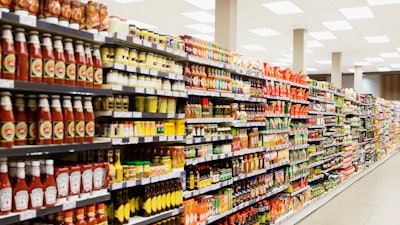
In the United States, a staggering 30% to 40% of the food supply is wasted annually, accounting for over 60 million tons of discarded food. The magnitude of this waste calls for a solution, and one of the most effective ways to address it is through the utilization of sales forecasts. Creating a foundational, data-driven sales forecast can significantly reduce surplus products and aid companies in curbing food waste.
Understanding Months-Long Base Sales Forecasts and Their Impact on the Food Industry
Industries worldwide that offer consumer products can benefit from implementing months-long base sales forecasts. However, the food industry faces a distinct challenge, as nearly every food item has an expiration date. Accurate sales predictions become crucial to mitigate this. Without a predictive strategy, companies risk financial losses and contribute to the growing issue of food supply wastage.
A months-long base sales forecast enables companies to analyze their sales over a specific period, providing insights into influential factors. By examining historical sales during defined intervals, companies can project the upcoming months with greater accuracy. This empowers them to optimize their budgets by procuring only the necessary quantities of products expected to be sold each month.
Establishing a Robust Months-Long Base Sales Forecast
Creating a months-long base sales forecast begins by leveraging sales data collected over recent years. While a minimum of two years’ worth of data is recommended, a longer span, such as five years, offers a clearer understanding of future expectations. This is particularly vital considering the potential distortion of sales data due to the pandemic. For example, restaurants and construction sites were shut down at different scales during the pandemic. Knowing how certain historical events impacted specific industries will be vital to this process.
Enhancing the accuracy of the forecast model involves incorporating external variables, such as prevailing United States Department of Agriculture commodity prices and monthly rainfall patterns. Close scrutiny of data gaps attributed to temporary closures, sudden sales spikes, or significant events is essential. The comprehensiveness of supplied data directly correlates with the precision of forecast outputs.
Harnessing the Power of Known Variables for Invaluable Adjustments
An effective strategy involves leveraging known variables not yet captured, such as potential “what if” scenarios. Integrating these scenarios into calculations empowers users to make informed inventory, production, and logistics decisions.
This practice proves particularly advantageous in industries like produce farming, enabling companies to establish optimal planting schedules and prevent excessive production. For example, these forecasts can help make sure there is enough lettuce to meet demand without having to deal with a warehouse of rotting vegetables.
For manufacturers, accurate forecasting facilitates demand prediction for various locations, striking a balance between “just-in-time” and “just-in-case” inventory levels. The benefits extend to reduced lead times, increased shelf life, and decreased emissions from transportation. Having a forecast for each location reduces the number of trips an item might take. If a distribution center or warehouse can be skipped, this shortens the lead time, lengthens the life of the product in the hands of the customer, and reduces wasteful emissions that are a part of each journey.
Strategic Forecasting Is Your Friend
Developing a precise long-term model for required products enhances efficiency significantly and optimizes a company’s budget. Collaborating with experts can further amplify these benefits.
There are organizations that offer models that leverage historical data and real-time market fluctuations to provide accurate demand forecasts on a months-long scale. These models can help users with planning while also freeing up capital by minimizing inventory ties.
In a world where the imperative to reduce waste and enhance efficiency has never been more critical, the power of strategic forecasting shines brightly. As we’ve explored, the food industry grapples with the unique challenge of perishable products and ever-shifting demands. However, armed with sales forecasting, the industry can pave the way forward in sustainability.
Genevieve Shattow, Ph.D., is the head of analytics at ThroughPut Inc.






















